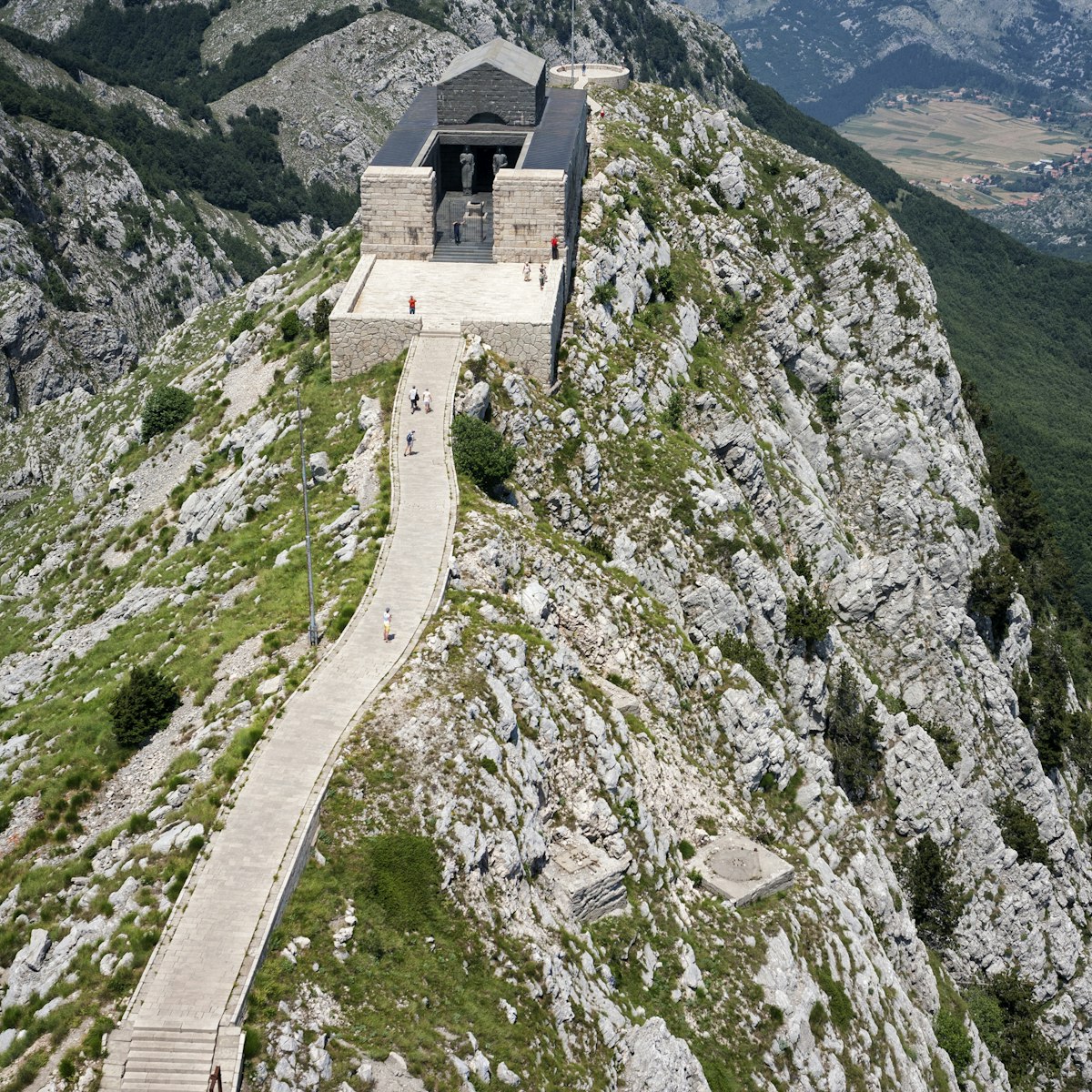Resting improbably – miraculously? – in a cliff face 900m above the Zeta valley, the gleaming white Ostrog Monastery is the most important site in Montenegro for Orthodox Christians, attracting up to a million visitors annually. Even with its numerous pilgrims, tourists and souvenir stands, it’s a strangely affecting place. A guesthouse near the Lower Monastery offers tidy single-sex dorm rooms, while in summer sleeping mats are provided for free to pilgrims in front of the Upper Monastery.
The Lower Monastery (Donji manastir) is 2km below the main shrine. Stop here to admire the vivid frescoes in the Holy Trinity Church (Crkva Sv Trojice; 1824). Behind it is a natural spring where you can fill your bottles with deliciously cold, sweet water (and potentially benefit from an internal blessing as you sup it).
From here the faithful, some of them barefoot, plod up the steep road to the top. Halfway up, the stone walls of the little domed Church of St Stanko the Martyr (Crkva Sv Mučenika Stanka) gleam golden in the sunset. Nonpilgrims and the pure of heart may drive directly to the main car park and limit their penitence to just the final 200m.
The Upper Monastery (Gornji manastir; the really impressive one) is dubbed ‘Sv Vasilije’s miracle’, because no one seems to understand how it was built. Constructed in 1665 within two large caves, it gives the impression that it has grown out of the very rock. Sv Vasilije (St Basil), a bishop from Hercegovina, brought his monks here after the Ottomans destroyed Tvrdoš Monastery near Trebinje. Pilgrims queue to enter the atmospheric shrine where the saint’s fabric-wrapped bones are kept. To enter you’ll need to be wearing a long skirt or trousers (jeans are fine) and cover your shoulders. Most women also cover their heads with a scarf. It’s customary to back out of the doorways and you’ll witness much kissing of lintels and making of signs of the cross from the devout. At the very top of the monastery is another cavelike chapel with faded frescoes dating from 1667.
The monastery is so firmly entrenched in the country's psyche that many Montenegrins – even nonbelievers – commonly 'swear to Ostrog' ('Ostroga mi…') when promising to do something.
There’s no direct public transport, but numerous tour buses (€20 to €30 for a day trip) head here from all of the tourist hot spots. There's an Ostrog train station (five daily from Podgorica, 47 minutes, €1.80) way down at the bottom of the hill; it's about a 90-minute hike from there to the Lower Monastery.
If you're driving, we strongly recommend that you take the excellent road through Danilovgrad to the monastery. The old road leaves the main Podgorica–Nikšić highway 19km past Danilovgrad. It's extremely narrow, twisting and steep and in a very poor state of repair; in short, it's terrifying.





